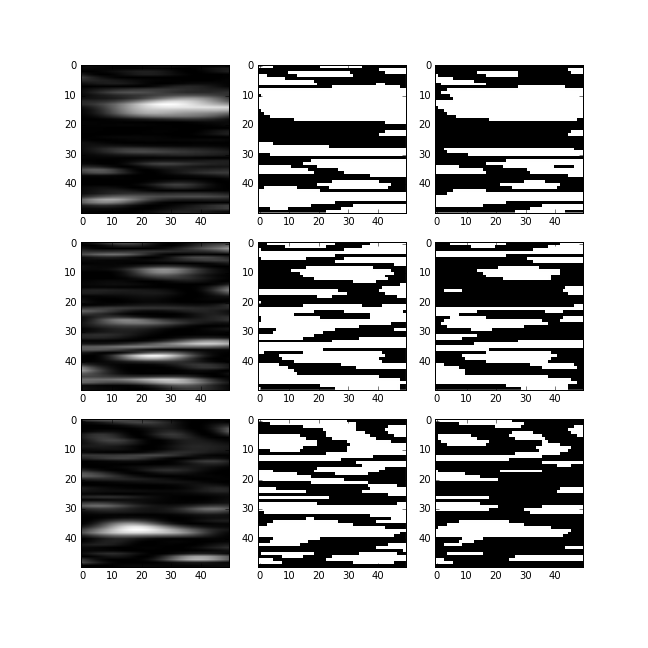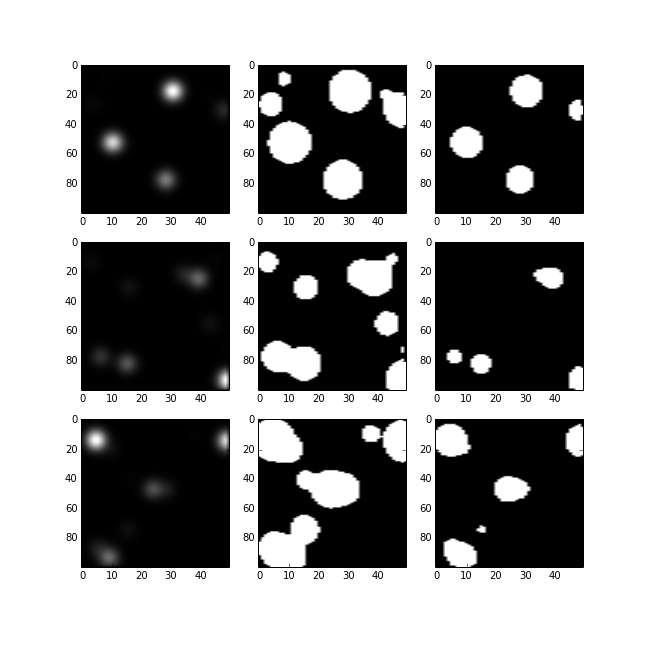Kyle Cranmer, Nov 19, 2015
Based on Estimating the significance of a signal in a multi-dimensional search by Ofer Vitells and Eilam Gross http://arxiv.org/pdf/1105.4355v1.pdf
Thanks to Ruggero Turra for detailed checks and debugging.
Note: You can run the notebook from your browser right now by gong to everware and paste the URL to this repository.
@misc{kyle_cranmer_2015_34842,
author = {Kyle Cranmer},
title = {look-elsewhere-2d: v1.0},
month = dec,
year = 2015,
doi = {10.5281/zenodo.34842},
url = {http://dx.doi.org/10.5281/zenodo.34842}
}
import lee2dYou start with several 2d numpy arrays that represent the
It's up to you to threshold on each scan to make 2d numpy arrays for the excursion sets
This should be done at two different threshold levels
q_scan = np.array((nx, ny))
#get excursion sets above those two levels
A_u1 = (q_scan>u1) + 0. #add 0. to convert from bool to double
A_u2 = (q_scan>u2) + 0.(The values for
For each of these scans you calculate the Euler characteristic
using this function in lee2d.py
def calculate_euler_characteristic(a):
"""Calculate the Euler characteristic for level set a"""after calculating the expected (mean) value of the Euler characteristics
for those two different levels, you can correct the local siginficance with
this function in lee2d.py. The maximum local significance is given by
def do_LEE_correction(max_local_sig, u1, u2, exp_phi_1, exp_phi_2):
"""
Return the global p-value for an observed local significance
after correcting for the look-elsewhere effect
given expected Euler characteristic exp_phi_1 above level u1
and exp_phi_2 above level u2
"""See an example using ROOT histograms
Note: You can run the notebook from your browser right now by gong to everware and paste the URL to this repository.
This is for the special case of a likelihood function of the form
The LEE correction in this case is based on
\begin{equation} E[ \phi(A_u) ] = P(\chi^2_1 > u) + e^{-u/2} (N_1 + \sqrt{u} N_2) , \end{equation} where
-
$A_u$ is the 'excursion set above level$u$ (eg. the set of parameter points in$(\nu_1,\nu_2)$ that have a -2 log-likelihood ratio greater than$u$ ) -
$\phi(A_u)$ is the Euler characteristic of the excursion set -
$E[ \phi(A_u) ]$ is the expectation of the Euler characteristic of those excursion sets under the null -
$P(\chi^2_1 > u)$ is the standard chi-square probability - and
$N_1$ and$N_2$ are two coefficients that characterize the chi-square random field.




